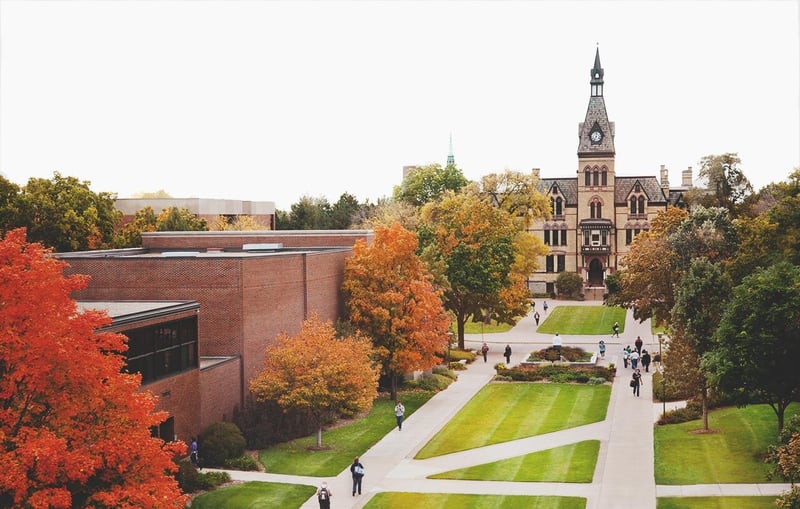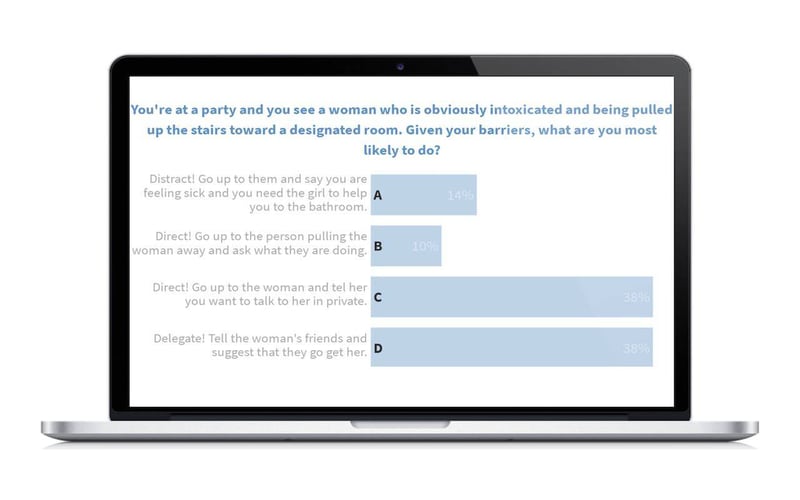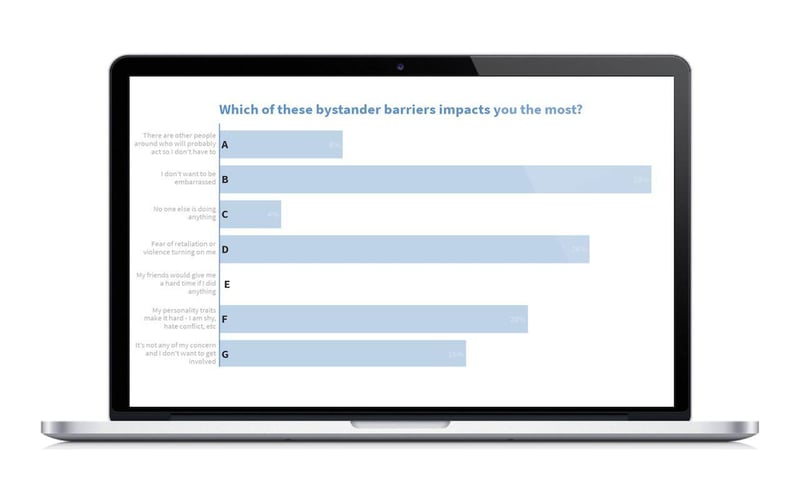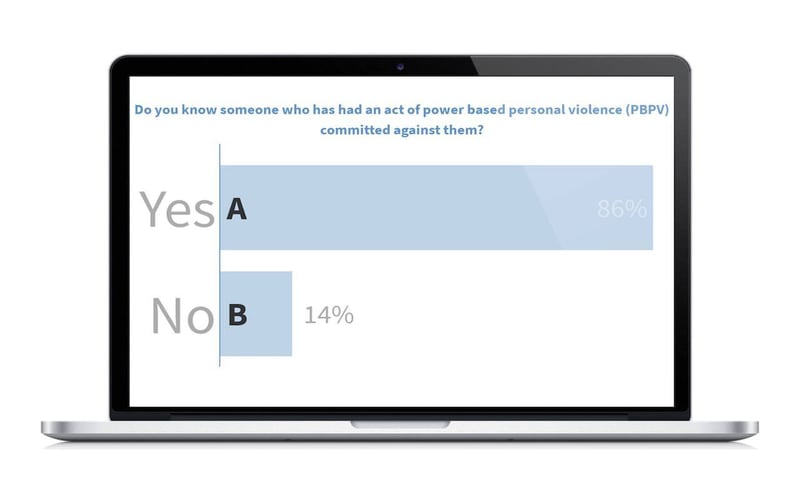Social justice education with Poll Everywhere: "It's about respect"

- Location
- Nationwide
- Size
- 100+
- Use case
- Corporate learning & development
Hamline University uses Poll Everywhere to create a more welcoming and socially aware environment
How does a modern university confront the many challenges of social justice education? By engaging incoming students in an ongoing, meaningful conversation.
"I've been doing this almost twenty years now, and in that time, I've seen many changes," says Javier Gutierrez, who serves both as Assistant Dean of Students and as Director of Residential Life at Hamline University in Saint Paul.
Gutierrez, in part, is referencing the increased social awareness of college students.

Hamline University incorporates the Greendot Bystander Program — which teaches students the techniques and skills they need to intervene when they witness harassment, assault, or hate incidents — into their residential life curriculum. In both the Greendot training and in Resident Advisor Training, Gutierrez found himself constantly asking one question: how can we know for sure that the material we teach is actually being absorbed?
A realistic, behind-closed-doors simulation?
A quiz at the end of training?
He explored some technological solutions, but none provided the instant response, the back-and-forth flow, that constitutes real conversation.
"When someone mentioned Poll Everywhere to me, I thought 'This might be a great use for that immediate response that we're looking for."
How do you ensure that social justice education is absorbed and not merely parroted?

Immediately, Javier put Poll Everywhere to use. The goal was simple: making sure no training material fell through the cracks. What topics did attendees want to explore further? Which topics were attendees hoping would be covered, but never were?
These were questions that Gutierrez had considered, but never had a way to record. "In the past, we've done hand-raising or writing things down, then we went to the clickers — but that's very outdated," he said.
Gutierrez now had a way to close the conversation loop with Poll Everywhere. Instead of one-way lectures, Hamline staff could elicit immediate feedback from trainees (both students and parents), and use that feedback to continue the conversation.
In one example, the conversation focused on healthy relationships. What are the limits of a healthy relationship? Are those limits spoken or unspoken? "We want them to see the dynamic between what each person in the room is comfortable with." Comfort varies from person to person. Gutierrez, by using Poll Everywhere to put students' (anonymous) responses onscreen, was able to visualize those differing perspectives.
The result was a harder-hitting lesson: We can't make assumptions about what constitutes a healthy relationship. What's okay for one may not be okay for another. "We have to be asking that every step of the way." Real-time polling during social justice education sessions provides a way to do that.
"It’s been amazing how versatile [Poll Everywhere] is, to be able to get at these different things that we wanted to, but we just never had an easy, efficient way of getting these questions answered."
Use anonymous polling to engage students in a judgment-free conversation

After RA training, Gutierrez runs polls designed to do two things. First, as a formative assessment to test trainees' knowledge of the material. Second, to isolate the material that warrants further discussion.
When, for example, the training material covers techniques to confront marijuana use, Gutierrez runs a simple poll: Do you use Technique A, B, or C? If students get it right, Javier can move on. If not, he can dive deeper into the topic.
Anonymity is crucial.
"The students like it because it can be anonymous. I think there's a lot more comfort in being able to respond anonymously," Gutierrez said. There's no worry about asking a "stupid question, or making a stupid comment. We can just get to 'This is what you said, now we can explore that.' That anonymity is great."
No more "I forgot my clicker"
Javier loves that using Poll Everywhere bypasses the "put your cellphones away" conversation, and that he never has to worry about whether or not students remembered to bring their clicker. (He brings extra iPads and laptops in case someone doesn't have their phone.)
But what he loves most is the clarity that polling brings to RA and social justice education: "We say we're going to go through this training, and that we're going to have some questions after." It brings some accountability into the equation. This is what we set out to do; did we accomplish our goal?
Over dinner, the Hamline staff usually get together to discuss results recorded in Poll Everywhere, available as a report. That tends to shape the discussions that happen later in the evening, when training continues.
"[Poll Everywhere] really helps shape the direction we take our training."
How can you do this?
Step 1
Create questions using the PollEverywhere desktop add-in, and be sure to use anonymity when appropriate.
Step 2
When discussing topics with a very clear right or wrong answer, insert a multiple-choice poll.
Step 3
When you want to facilitate discussion, use word clouds to create an instant visualization of audience perceptions.
Poll Everywhere for learning and development
Power your next professional development training with live audience feedback.